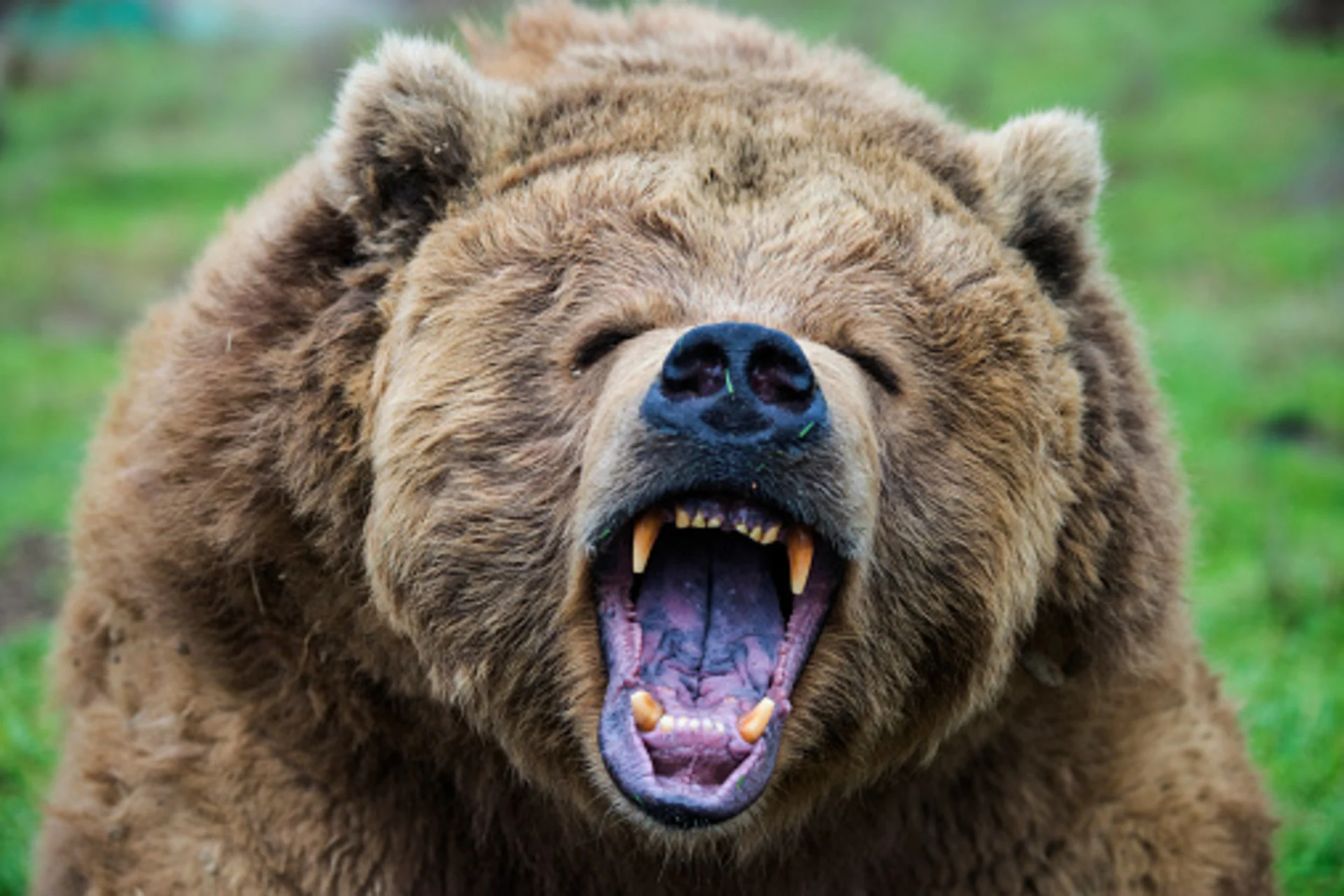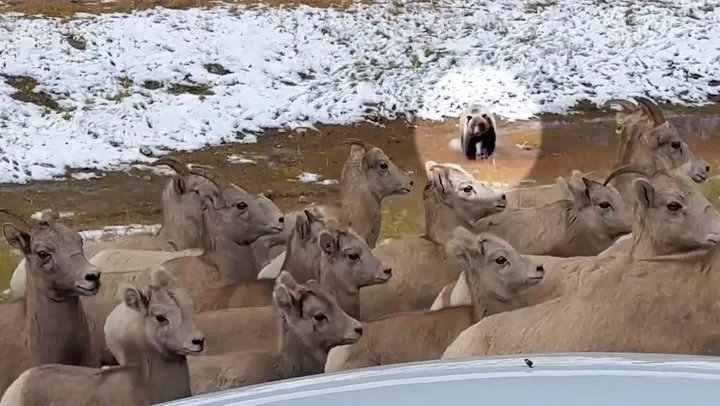
Close brush with hunting grizzly shows risk of encounter ahead of winter
Several people were surprised when this bear suddenly charged toward them while chasing a herd of sheep. The Weather Network's Connor O'Donovan speaks with two people who witnessed the incident.
A Calgary-area duo says a close encounter with a hunting grizzly bear (seen in the video above) shows just how active, fast-moving, and dangerous the apex predators are at this time of year.
Bree Zimmerman and Cody Bilben were preparing for a hike in the parking lot at the Elbow Lake trailhead when the dramatic scene unfolded.
“We parked, and we were getting ready,” Bilben said, explaining they had noticed the bear on the drive in, but at the time it wasn’t displaying any predatory behaviour.
But “then, things took a turn.”
Suddenly, a herd of bighorn sheep grazing nearby began running towards the duo as they stood outside their parked car.
As the video shows, it soon became apparent what set the sheep in motion—the grizzly bear, in full stride, hot on the hoofs of the sheep.
“We slammed our doors and shut ourselves in the car. That’s when the sheep kind of split into two. One chunk went towards the highway, and one continued past our car,” Zimmerman explained.
Luckily, the bear opted to chase the part of the herd that fled along the highway. After a spirited chase, the bear slows down. Zimmerman said it eventually continued up the highway without catching any prey. She added that a conservation officer was also in the area and monitored the bear in a truck as it continued away from the parking lot.
Visit our Complete Guide to Fall 2023 for an in-depth look at the Fall Forecast, tips to plan for it and much more!
Zimmerman and Bilben continued on their hike, but say the incident was a vivid reminder of the presence of grizzly bears in the wild and the pace at which a low-risk situation can turn into a high-risk encounter.
“When they start running, they’re very quick and can make a lot of ground very quickly. It makes you understand why they tell you to maintain a safe distance,” Bilben said, pointing out that a cyclist was riding just ahead of the herd of sheep that fled down the highway.
Zimmerman calls it an “unpredictable moment”.
“Now I think I realize more why it’s important to stay in your vehicle. Wildlife are unpredictable, especially this time of year,” she said.

It's important to keep a safe distance and remain in your car if you encounter a bear. (Photo credit: Cody Bilben)
Meanwhile, one bear behaviour expert says it’s not unusual to see this kind of behaviour from a grizzly bear as winter approaches.
“He was charging for the sake of hunting. He wasn’t particularly successful, but he would try again if he got a chance,” said Annie Booth, an Environmental and Sustainability Studies Professor at the University of Northern British Columbia.
“This is the time of year when bears are a little more unpredictable because they’re trying to fatten up.”
SEE ALSO: These bear-safety tips could save you hundreds of dollars
Just like humans, Booth says, bears take note of the reduction in available forage, the change in daylight hours, and, of course, the drop in temperature. She says bears will stay out as long as possible to fatten up ahead of their hibernation period, during which they may get up, stretch, and even walk around near their dens but will maintain an overall low level of activity.
“If they go into hibernation without sufficient fat reserves, then they aren’t going to come out in good shape,” Booth said.
“Until we get a really long series of hard freezes and a lot of snow, they’re going to be out and about. Just because it’s October or November, it really depends on the weather and how long they think they can keep foraging before they feel they need to get that den up."
Especially given the recent tragic deaths of two hikers in Banff, Booth says now is an important time to remember the space and respect they deserve.
“A bear should never be taken casually. They can actually, over short distances, outrun a racehorse,” she said.
“I don’t think we need to be terrified, but they do need to be respected. But if you watch the video, they pay no attention to the humans. Nine times out of 10, they’re not interested in human interactions. But you’re more likely to find yourselves in close proximity to one, and you need to be aware and cautious.”
Booth recommends not wearing headphones, becoming in tune with your surroundings if out in the wild at any time of year, and paying attention to any warnings or reports of sightings.
“Any bear encounter that has a negative connotation, even if they just seem too close to humans, is going to result in the bear being killed. Most of the bear populations in Canada are vulnerable and can’t take a lot of incidental kills,” Booth explained.
“To the extent that humanity can be more aware of policing their own activities to not actually cause conflict, the more likely we’ll see bears perpetuated into the future.”
WATCH BELOW: Is your bird feeder actually a BEAR feeder? What you're doing wrong
(Header image courtesy of Mark Newman/Getty Images. File photo use for illustration purposes only.)











